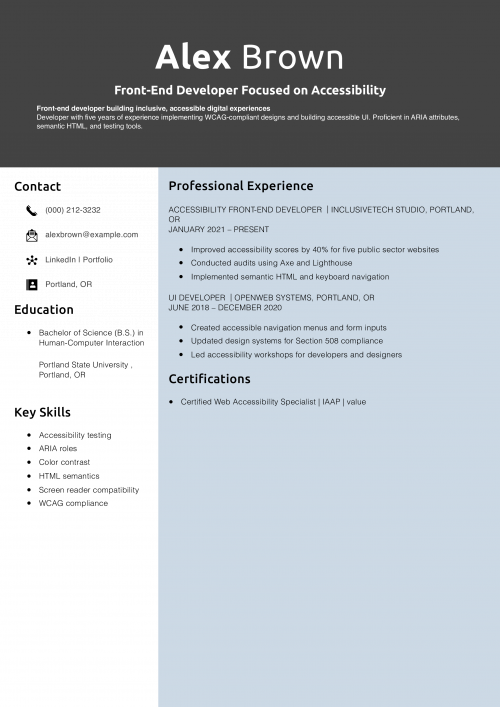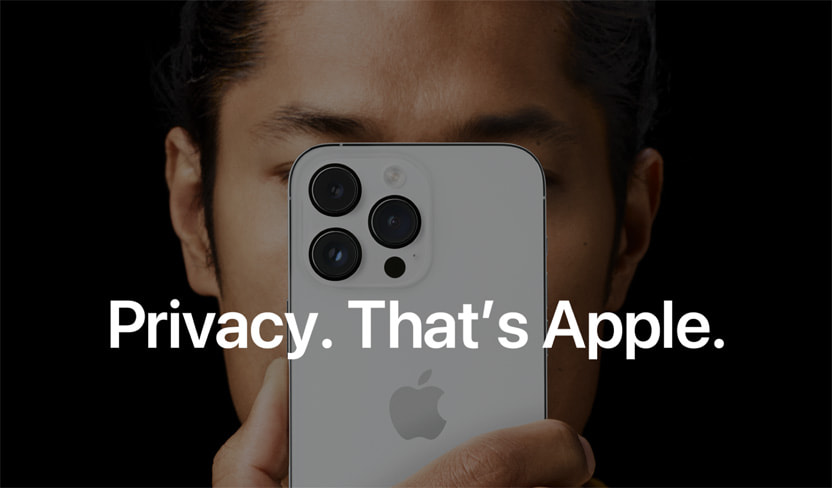In an era where artificial intelligence is rapidly reshaping our digital interactions, the conversation is increasingly dominated by powerful, cloud-based models that process vast amounts of user data on remote servers. While these systems offer incredible capabilities, they also raise profound questions about privacy and data security. Amidst this landscape, Apple is championing a fundamentally different approach, one that is deeply woven into its hardware and software philosophy: on-device AI. This strategy isn’t just a marketing slogan; it’s a core engineering principle that prioritizes user privacy by keeping personal data on the device itself. As AI becomes more integrated into our daily lives, from our iPhones to the new Apple Vision Pro, understanding this on-device paradigm is crucial. This shift represents one of the most significant developments in recent Apple privacy news, fundamentally altering the relationship between user, data, and intelligent computing by building a fortress of privacy directly within the silicon of its products.
The On-Device Paradigm: Apple’s Foundational Approach to AI Privacy
At the heart of Apple’s strategy is a simple yet powerful concept: the most secure data is the data that never leaves your device. While competitors often rely on sending user queries, photos, and other personal information to the cloud for processing, Apple leverages its integrated hardware and software to perform an increasing number of AI tasks locally. This forms the bedrock of its privacy promise and is a recurring theme in all major iOS updates news.
What is On-Device AI?
On-device AI, also known as edge AI, refers to the execution of artificial intelligence algorithms directly on a user’s device—be it an iPhone, iPad, or Apple Watch—rather than on a centralized cloud server. Think of it as having a personal translator in your pocket versus calling a remote translation service. The former is immediate, works offline, and the conversation remains private; the latter requires a connection, introduces latency, and involves a third party.
This capability is made possible by Apple’s custom silicon. The A-series and M-series chips that power the company’s devices feature a dedicated component called the Neural Engine. This specialized hardware is designed to perform trillions of machine learning operations per second with remarkable energy efficiency. Paired with software frameworks like Core ML, developers can integrate powerful, pre-trained models into their apps that run directly on this hardware, ensuring a seamless and private user experience.
Why Privacy is the Primary Driver
The chief advantage of this architecture is privacy. By processing data locally, Apple drastically minimizes the exposure of sensitive user information. Your photo library isn’t scanned on a server to identify people and objects; this happens on your iPhone. Your speech patterns for Siri requests aren’t permanently stored in the cloud for analysis; they are processed on your device whenever possible. This principle is a cornerstone of recent iOS security news and extends across the entire Apple ecosystem news.
This approach protects highly personal information, which is particularly critical for features related to health and wellness. The latest Apple health news often highlights how data from the Apple Watch, such as ECG readings or blood oxygen levels, is processed and encrypted on the device, giving users full control. This philosophy is a direct counterpoint to the data-harvesting business models that underpin many other tech giants, making privacy a key product feature rather than an afterthought.
On-Device AI in Action: A Tour Through the Apple Ecosystem
Apple’s on-device AI isn’t a theoretical concept; it’s already powering dozens of features that millions of users interact with daily. From the iPhone in your pocket to the immersive world of the Apple Vision Pro, local processing is enhancing functionality while safeguarding privacy across the board.

The iPhone and iPad Experience
The most prominent examples of on-device AI are found on the iPhone and iPad. Each new piece of iPhone news or iPad news seems to bring more intelligent features powered by the Neural Engine.
- The Photos App: When you search for “beach” or “dog” in your Photos library, the indexing and recognition happen entirely on your device. Features like Visual Look Up, which can identify plants and landmarks in your photos, and Live Text, which makes text in images selectable, all run locally. Your personal photo collection is never uploaded to a server for analysis.
- Siri: A significant part of recent Siri news has been the move to on-device speech processing. For many common requests—like setting a timer, opening an app, or changing a setting—Siri no longer needs an internet connection. This not only makes it faster and more reliable but also ensures your voice commands remain private.
- Keyboard Intelligence: Predictive text, autocorrect, and QuickPath typing are all powered by on-device machine learning that adapts to your personal writing style without sending your keystrokes to the cloud.
Beyond the Handheld: Wearables and Vision
The on-device philosophy extends to Apple’s most personal devices, where privacy is paramount.
- Apple Watch: As a constant source of health and fitness data, the Apple Watch relies heavily on local processing. The latest Apple Watch news often emphasizes how features like fall detection, irregular rhythm notifications, and sleep tracking analyze sensor data directly on your wrist. This sensitive health information stays under your control, encrypted on the device.
- Apple Vision Pro: The groundbreaking spatial computer is a testament to the power of on-device processing. The latest Apple Vision Pro news underscores that for a seamless and responsive augmented reality experience, there can be no latency. Eye tracking, hand gestures, and 3D mapping of your environment are all processed in real-time by the M2 and R1 chips. This is a critical aspect of Apple AR news, as sending this constant stream of environmental and biometric data to the cloud would be a privacy and performance nightmare. Future accessories, as hinted by speculation around a Vision Pro wand news or Apple Pencil Vision Pro news, would undoubtedly follow this same secure, local-first model.
The Supporting Cast: Accessories and Home
Even accessories and home devices are part of this ecosystem. Recent AirPods news details how features like Adaptive Audio and Personalized Spatial Audio use on-device computation to adjust sound in real time based on your environment. Similarly, HomePod mini news often highlights HomeKit Secure Video, a system where your security camera footage is analyzed locally on a home hub like a HomePod or Apple TV before being end-to-end encrypted and stored in iCloud. Even the latest Apple TV news points to more powerful chips enabling richer, on-device experiences.
The Technical Underpinnings and Developer Implications
Apple’s on-device AI strategy is built on a synergistic relationship between its custom hardware and developer-friendly software frameworks. This vertical integration allows for performance and efficiency that would be difficult to achieve with off-the-shelf components.
Hardware: The Power of Apple Silicon
The Neural Engine is the hero of Apple’s on-device AI story. First introduced with the A11 Bionic chip, it has seen exponential performance growth with each generation. This dedicated hardware is optimized for the specific type of matrix multiplication and other mathematical operations that are fundamental to neural networks. By offloading these tasks from the main CPU and GPU, the Neural Engine allows for complex AI models to run quickly and with minimal impact on battery life. This efficiency is why a slim iPhone can perform tasks that once required a server rack, a fact that consistently drives Apple accessories news as developers create more intelligent peripherals.
Software: Core ML and Foundation Models
Hardware is only half the equation. Core ML is Apple’s foundational machine learning framework that acts as the bridge between the Neural Engine and third-party apps. It allows developers to easily integrate trained models into their applications. A developer can train a model to identify bird species, for example, and then use Core ML to deploy it within their app to run directly on the user’s device.

More recently, Apple has taken this a step further by introducing its own on-device Foundation Models. A Foundation Model is a large, versatile AI model trained on a massive dataset, which can then be adapted for various tasks. By providing a powerful yet optimized Foundation Model that can run locally, Apple is enabling developers to build a new class of intelligent, privacy-preserving apps. An app could use this model to summarize text, generate replies, or perform other complex tasks without any data ever leaving the device. This is a game-changer, democratizing access to powerful AI while upholding Apple’s privacy standards.
Best Practices and Common Pitfalls
For developers embracing this paradigm, there are key considerations:
- Best Practice: Model Optimization. Developers should use tools like Core ML Converters to quantize their models. This process reduces the precision of the model’s weights, significantly shrinking its file size and memory footprint with minimal impact on accuracy, making it suitable for on-device execution.
- Pitfall: Overlooking Performance. A model that runs perfectly on a high-end iPad Pro might struggle on an older iPhone. Developers must test across a range of devices to ensure a smooth user experience and avoid draining the battery.
- Best Practice: Hybrid Approach. Not every task is suited for on-device processing. For features that require real-time information from the internet (e.g., “What’s the weather today?”), a hybrid approach is best. Apple’s own “Private Cloud Compute” concept shows a path forward: process as much as possible on-device, and for the parts that must go to the cloud, use advanced encryption and privacy techniques to ensure the data remains secure and is not stored.
The Broader Impact: Challenges, Comparisons, and Future Outlook
Apple’s steadfast commitment to on-device AI positions it uniquely in the tech industry, but this approach comes with its own set of trade-offs and challenges as it competes with the sheer scale of cloud-based systems.
On-Device vs. The Cloud: A Necessary Trade-off?

The debate between on-device and cloud AI is not about which is universally “better,” but about which is appropriate for a given task. It’s a balance of priorities.
- Pros of On-Device AI:
- Privacy: Unmatched data security as personal information stays local.
- Speed: Near-instantaneous results with no network latency.
- Offline Functionality: Core features work without an internet connection.
- Cost: Reduces reliance on expensive server infrastructure for both Apple and developers.
- Cons of On-Device AI:
- Limited Power: Constrained by the processing power and memory of the device.
- Model Size: Cannot run the truly colossal, multi-trillion-parameter models that exist in the cloud.
- Stale Knowledge: Models are only as current as the last software update and lack real-time global information.
This contrasts sharply with competitors who leverage the virtually limitless power of the cloud to run the largest, most capable AI models. While Apple’s approach may not always produce the most powerful or knowledgeable AI, it offers a compelling proposition for users who prioritize privacy and responsiveness for their personal data. This distinction is even relevant in historical contexts; from the days of the iPod Classic news, Apple has always prioritized a controlled, integrated user experience, a philosophy that now extends to AI. Some might even speculate that if any iPod revival news were to materialize, a modern device would surely leverage on-device AI for smart playlists and audio processing, continuing this legacy.
The Future of Personalized, Private AI
Looking ahead, Apple is likely to double down on its strategy. Future generations of Apple Silicon will undoubtedly feature even more powerful Neural Engines, closing the performance gap with the cloud for many tasks. We can expect future iOS updates news to unveil deeper OS integrations, where on-device AI proactively assists users in a more personalized and context-aware manner, all while maintaining privacy.
This focus will continue to shape the entire product line, from AirTag news involving more intelligent location processing to the way we create content with an Apple Pencil news update that could bring predictive strokes. The on-device approach reinforces the value of the Apple ecosystem, creating a secure and seamless web of devices that work together intelligently, without compromising the user’s digital sanctity.
Conclusion
Apple’s focus on on-device artificial intelligence is more than just a technical decision; it is a clear and powerful statement about the future of personal computing. In a world rushing towards centralized, data-hungry AI, Apple is building a different path—one where intelligence and privacy are not mutually exclusive. By harnessing the power of its custom silicon and integrated software, the company delivers sophisticated AI features that are fast, reliable, and fundamentally private. This commitment, evident across its entire product ecosystem, provides users with a compelling choice: to embrace the power of AI without sacrificing control over their most personal information. As this technology continues to evolve, Apple’s privacy-first approach will likely become an even more critical differentiator, setting the standard for responsible innovation in the intelligent era.











